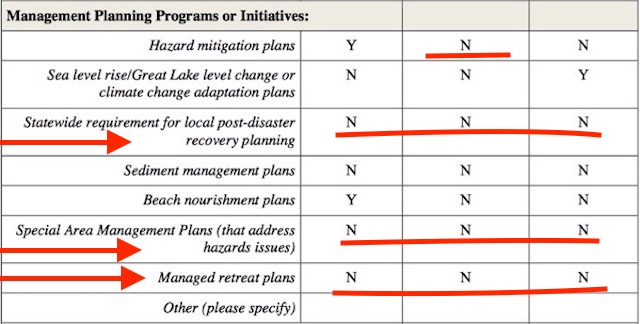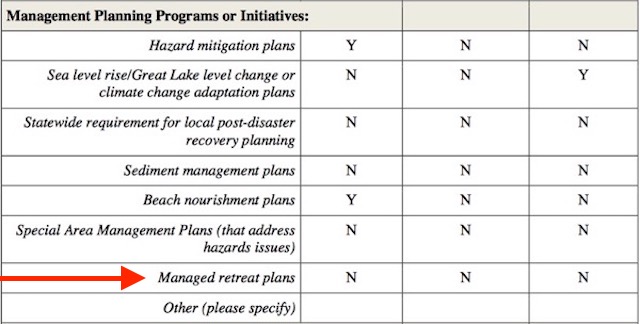The Right Way To Revoke The Pinelands Pipeline Approval
Commission Wobbling On Putting The Final Nail In SJG Pipeline Coffin
Staff Incompetence or Sabotage?
Vote Postponed until a “physically present quorum”
Inability to get a quorum “Seems like a mess – which is what it is”
This is Administrative Law 101 – I can’t believe that the Commission’s Counsel and the Attorney General’s Office signed off on all this. So, is it incompetence? Or sabotage?
The Pinelands Commission is having a difficult time putting the final nail in the coffin of the South Jersey Gas pipeline they previously approved.
The pipeline is no longer consistent with the Comprehensive Management (CMP) plan due to the cancellation of the BL England re-powering, the primary purpose for the pipeline and the sole reason it was found to be consistent with the CMP and approved by the Commission.
Recently, I was advised by an official in a position to have first hand knowledge that the Commission can not reach consensus on clear language to kill the project, i.e. to determine that it is no longer consistent with the CMP and to revoke the prior approval, resulting in what was called a “weak” resolution. Worse, the leader of a conservation group was OK with the compromise language the Commission negotiated (emails provided upon request and assurance of confidentiality).
But a prior April 2019 Resolution concluded that the pipeline was no longer consistent with the CMP and was revoked. That Resolution was tabled. The current version rejected that April language and does not conclude that the project is inconsistent with the CMP and revoke the prior approval.
In addition to the language of a Resolution, the issue that is not getting any attention by the Commission and public is the procedure by which the Commission should act to kill the project.
SJG has raised these procedural issues, and based on my review of their April 12, 2019 letter, I think they raise valid issues. The Commission would be highly vulnerable to legal reversal if they try to act via Resolution in the absence of formal procedures. In an April 12, 2019 email to AC Press reporter Michelle Post – which I sent to conservation and environmental leaders as a warning – I wrote:
I think they are correct on both legal issues (jurisdiction and procedure).
This looks like a significant embarrassment to the Commission and the administration.
The proper course of action after BL England cancelled their project would have been: [1)]
2) for the Pinelands Commission to issue a formal public notice, and provide a public hearing on its decision to withdraw the prior approval and state the grounds upon which they base that decision.
The Pinelands Comprehensive Management Plan (CMP) regulations appear to be silent on the procedures for revocation of an existing Commission project approval, like the South Jersey Gas pipeline.
But longstanding basic administrative law procedures on “final agency action” by the Commission under the CMP require formal procedures, i.e. a Report or statement of factual and legal basis, public notice, public comment and public hearing. These are basic and fundamental due process procedures.
The Commission was required to follow these formal procedures in issuing the original approval. Logically, they must follow the same procedures to revoke a prior approval.
Here’s one example from the CMP on revocation of prior county or municipal plan certification:
7:50-3.62 Notice and Hearing
Upon making a determination to initiate proceedings to revoke, suspend or modify Commission certification of a county or municipal master plan, regulation or land use ordinance, the Executive Director shall give notice and conduct a public hearing in accordance with the provisions of N.J.A.C. 7:50-4.
If notice and public hearing are required to revoke a local certification, then obviously killing a multi-million dollar pipeline requires formal procedures.
Here are examples from DEP’s regulations that mandate formal procedures. This is for revoking a water permit, but the procedural requirements are virtually boilerplate for revocations under all DEP permit programs:
For the suspension or revocation of an existing permit or the denial of an application for a new permit or permit renewal, issue a notice of intent to suspend, revoke or deny, as applicable, in accordance with N.J.A.C. 7:14A-15.7(a) setting forth the basis for the permit action; (emphases mine)
The notice and statement of basis require public notice and comment, see:
- 7:14A-15.10 PUBLIC NOTICE OF PERMIT ACTIONS AND PUBLIC COMMENT PERIOD
So, not only must the current Resolution be tabled, but the Commission must abandon the entire Resolution based approach and instead follow formal procedures to revoke the prior approval, the same procedures they followed to issue the original approval. Anything less than that will not kill the project and instead will invite litigation by SJG.
This is Administrative Law 101 – I can’t believe that the Commission’s Counsel and the Attorney General’s Office signed off on all this. So, is it incompetence? Or sabotage?
Getting back to the Commission’s monthly meeting on November 8, 2019, where they considered a seriously flawed Resolution purported to kill the pipeline was difficult to watch – I was embarrassed for the Commissioners.
Before this meeting, I explained those flaws in this recent post:
You can watch video of the Pinelands Commission’s November 8, 2019 monthly meeting
I was not at the meeting, but after watching this video, my concerns are heightened.
The bumbling and lack of a quorum were humiliating.
After the public raised objections to Wittenberg’s actions – way to go Georgina Shanley, Agnes Marsala and Arnold Fishman ! – the Chairman defended what was egregiously improper behavior by the Executive Director Wittenberg and staff in meeting with South Jersey Gas and outlining options on how they could proceed under the CMP.
Chairman Prickett stated that the CMP encourages applicants to meet with staff and that the Commission was briefed by Wittenberg on the SJG meeting.
But Prickett failed to note that the CMP does not encourage the kind of meeting SJG was provided, under these specific and unique conditions – on remand from a court, with no formal policy position taken by the Commission. He also failed to note that being briefed AFTER a meeting occurred is not remotely equivalent to being asked permission to conduct such a meeting and receive policy guidance from the Commission BEFORE it occurs.
Wittenberg played exactly the same game in the prior dispute about a “waiver”.
During the Commission’s deliberations, Executive Director Wittenberg interjected to rebut public criticism about her role and pointed the finger at the Commissioners. She said:
“the language of Resolution was the Commissioners’ – agreed to at a meeting. It’s their language.”
Wittenberg expressed frustration about the inability of Commissioners to establish a quorum. She even implied that the technical difficulties with the phones were a sham, by claiming that the phones worked for all the other calls, except the Commissioners. Wittenberg then blurted out:
“(Lack of a quorum) seems like a mess – which is what it is”
It is remarkable – especially after the pattern of Wittenberg’s prior collaboration behind the backs of the Commissioners – that she still is allowed to get away with this crap and even bully the Commissioners.
Arnold Fishman summed it up nicely.
He criticized the Commission as being too slow and squandering a golden opportunity to “put a fork in it”.
Fishman warned that the pending Resolution was the equivalent of a “stop work order” and left the door open for SJG to proceed.
Agnes Marsalla raised an important issue. She claimed that SJG favorably advised investors of their intent to proceed AFTER the meeting with Wittenberg. That is an incredible situation that warrants investigation.
Agnes accused Wittenberg and staff of supporting the project, being captured by SJG, and of creating a backdoor for SJG to proceed.
Agnes was also the only one to raise the issue of Gov. Murphy’ pending Pinelands appointments. She advised to either table the SJG matter and wait until they are confirmed by the Senate, or kill the pending flawed Resolution.
Once again, the people are far ahead of the leaders.

